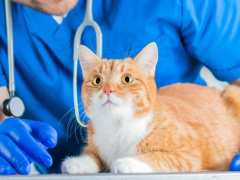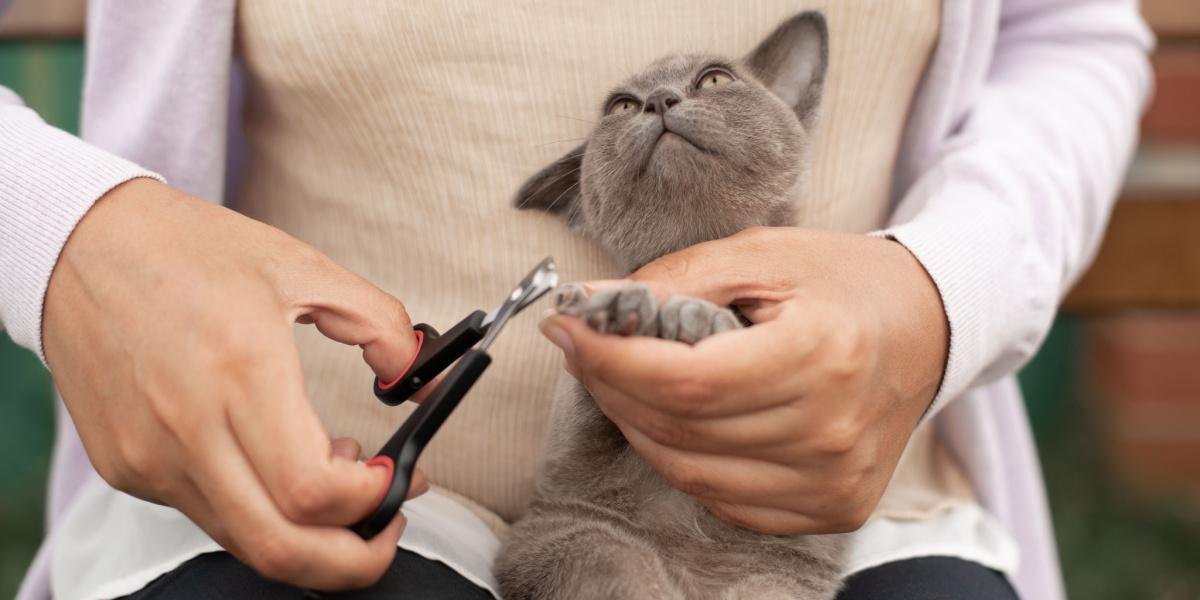
In general, most cats need their nails trimmed somewhere between once every two weeks and every two months. However, every cat is different, and you’ll need to learn about your cat’s specific needs. Some cats don’t need their nails trimmed at all!
In this article, you’ll learn what your cat’s nails do, how often to check them, and how to tell whether your cat’s nails need trimming.
Your Cat’s Claws
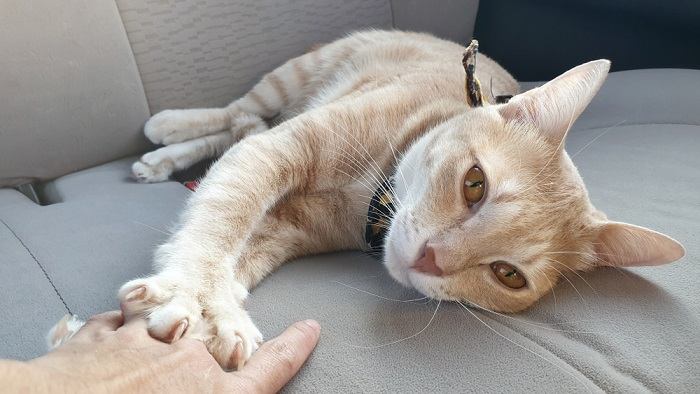
Your cat’s nails are a necessary part of their body, serving multiple important purposes.
Your cat’s nails are an important part of their anatomy and they’re perfectly designed for hunting and climbing. Each toe ends in a claw which is ‘retractable’, meaning the nail can move backward into the soft part of the toe, so it’s not always ‘out’ and in contact with the ground.
Cat claws are made of keratin, like human nails, and are growing slowly but continuously. Like human nails, they have no feeling. Cat claws do have a ‘quick’, which is the inner part of the nail (usually seen as a pink center) that has nerve endings and blood vessels – this will feel pain and bleed if damaged or cut.
Cats take care of their claws by scratching. This helps them to shed the oldest outer layer of the claw, keeping the claw sharp and ready for action.
Also Read: Best Nail And Claw Caps For Cats
How Often Should I Trim My Cat’s Nails?
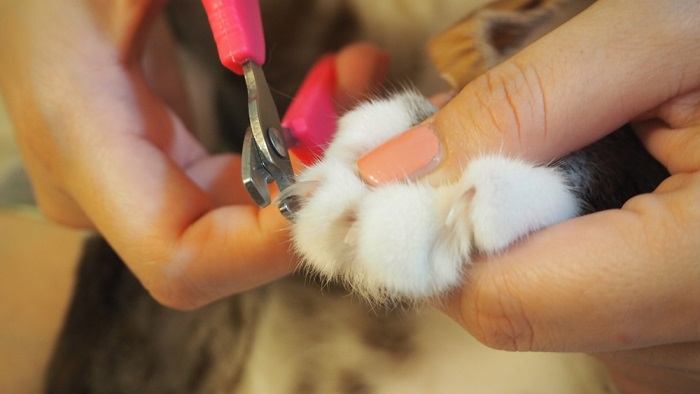
Not all cats need their nails trimmed, but you’ll still need to inspect their nails regularly inspecting so you can see if they need a trim or not.
Not all cats need their nails trimmed, but you’ll still need to inspect their nails regularly inspecting so you can see if they need a trim or not.
Your cat is less likely to need a nail trim if they are:
- Young and healthy
- Spending time outdoors
- Active (especially if they climb)
For these cats, you can inspect their claws once a month. If you’re running into problems, increase how frequently you check your cat’s nails. If they always seem fine, try every 6 weeks, dropping to every 8 weeks if they are still never needing trimming. Remember to increase the frequency at which you check your cat’s nails as they become seniors or if they have an illness that stops them from being as active or spending time outside.
Senior and geriatric cats have tougher claws, with outer layers that don’t shed as easily. This means they may struggle to look after them themselves. These cats should have their nails inspected every 2-4 weeks, and trimmed if necessary.
Indoor cats may struggle to wear their nails down as much as they should, especially if they aren’t a fan of the scratching post. Check their nails monthly, to begin with, adjusting so that you inspect more or less frequently as necessary.
Cats that have three legs or altered mobility will need their nails checked every 2-4 weeks. The altered gait might cause uneven wearing of the claws, and they may be less likely to scratch to keep their nails in good condition. Exactly how often your cat’s nails need trimming will depend on their exact gait, so you may need to adjust how often you inspect and trim to their unique needs.
Also Read: How To Safely Trim Cat Nails – A Step By Step Guide
How To Check Your Cat’s Nails
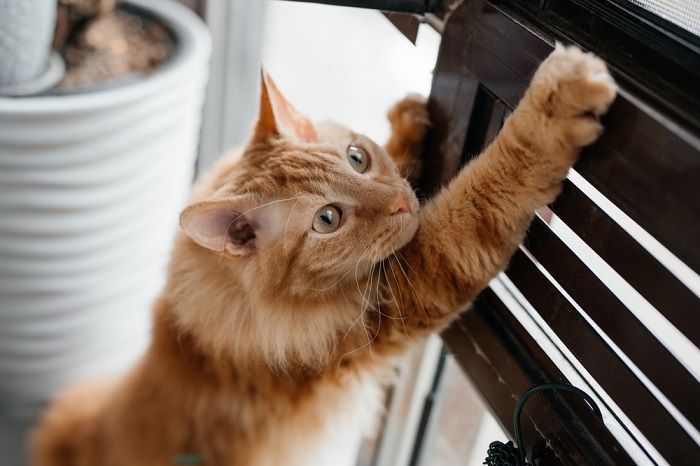
Checking your cat’s nails frequently is the best way to ensure they don’t grow too long and cause pain or damage.
Checking your cat’s nails frequently is the best way to ensure they don’t grow too long and cause pain or damage. If your cat is amenable, you should check their claws using the following steps:
- Ask somebody to hold your cat for you. If you don’t have anybody, gently hold your cat on your lap, facing across you or away from you.
- Check each paw in turn by lifting it and turning it pad-side-up. Look for any nails growing into the pad. These will need to be treated by a veterinarian.
- Squeeze gently, pressing the center pad and upper part of the foot, to expose the claws.
- Look for any claws that are curling under, and any claws that are thicker or less see-through than usual, indicating that your cat hasn’t been scratching to remove the outer claw layers. As long as they aren’t touching the pad, these can be trimmed at home, but take care if the nail is too opaque to see the quick properly.
- Look for the pink quick inside the nail. If the nail is growing more than 3mm past the end of the quick, you should check them again in a week or two. If the nail is growing more than 5mm past the end of the quick, it’s time for a trim.
- Don’t forget to check your cat’s dewclaws, which are their ‘thumbs’. These nails are a bit further up the leg than the rest and don’t get worn down as well. This means they need trimming more regularly.
Also Read: Why Do Cats Knead Their Owners?
How To Clip Your Cat’s Nails
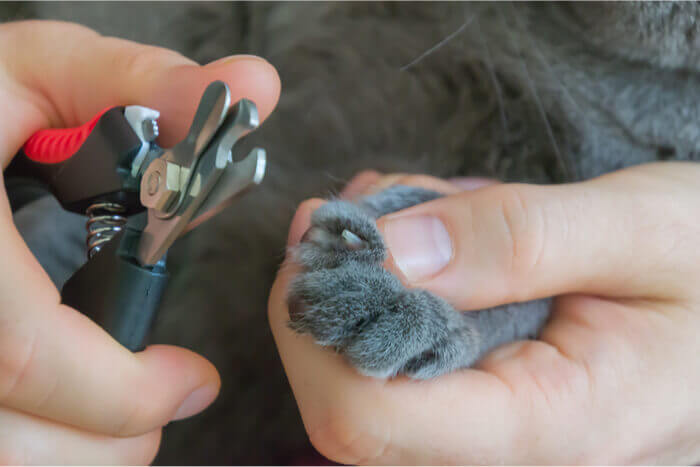
Cut one nail at a time, cutting only the white part of the nail. Never cut into the quick (the pink part). You should trim the nail back to about 2mm before the quick.
It’s often easier to have a second person available to help hold while you trim your cat’s nails. Holding them still is important, as if they wriggle you could cut the quick and cause them pain and make them start bleeding.
While this is possible on your own (especially with gentle handling and a towel) it might be best to have help the first few times, until you are confident with what you’re doing. If you don’t have anyone to help, consider whether a mobile groomer could do it, or a nurse/tech at your veterinary clinic may be able to assist you.
You’ll also need a good pair of cat nail clippers, a pile of treats as a reward, and a steady hand. Styptic powder is also useful in case your cat’s nail starts bleeding. Keep calm, or your cat will pick up on your nerves.
Cut one nail at a time, cutting only the white part of the nail. You should trim the nail back to about 2mm before the quick (the pink part of the nail). NEVER cut into the quick, as this will cause your cat pain and bleeding. If you accidentally cut into the quick, use a styptic pencil to stop bleeding.
If you need more help learning how to trim your cat’s nails, head over to our handy guide here.
Also Read: How To Stop Cats From Scratching Furniture
What Happens If You Don’t Trim Your Cat’s Nails?

It’s not uncommon for vets to deal with pets with ingrown nails, especially senior cats.
Cat nails that are left to grow long can catch on the carpet or furniture, and break. If they continue to grow they will curl back in toward the foot. Eventually, the sharp end of the nail pierces the pad, causing pain and infection. Cat litter and other dirt can get stuck beneath the curled toe, causing further pain.
It’s not uncommon for vets to deal with pets with ingrown nails, especially senior cats. If you suspect your cat might have an ingrown claw, it’s best to get it sorted sooner rather than later, as it will be much easier to deal with.
The overgrown nails should be trimmed back, and any remaining bits of nail will need to be picked out of the pad. Any pad wounds will need cleaning and your cat may need a course of antibiotics.
Also Read: Declawing Cats: What You Need to Know
Conclusion
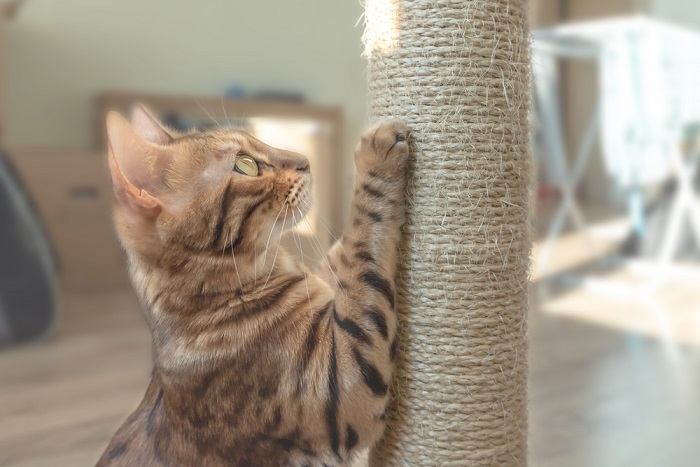
Not all cats will need their nails trimmed, but it’s important to inspect them regularly to see if they need a trim.
Not all cats will need their nails trimmed, but it’s important to inspect them regularly to see if they need a trim. For young, healthy, active, outdoor cats, once a month is probably sufficient. For senior or geriatric cats, you’ll need to check your cat’s paws every two weeks. You’ll soon work out the perfect frequency of nail trimming for your individual cat.
Also Read: Why Do Cats Chew On Their Nails

